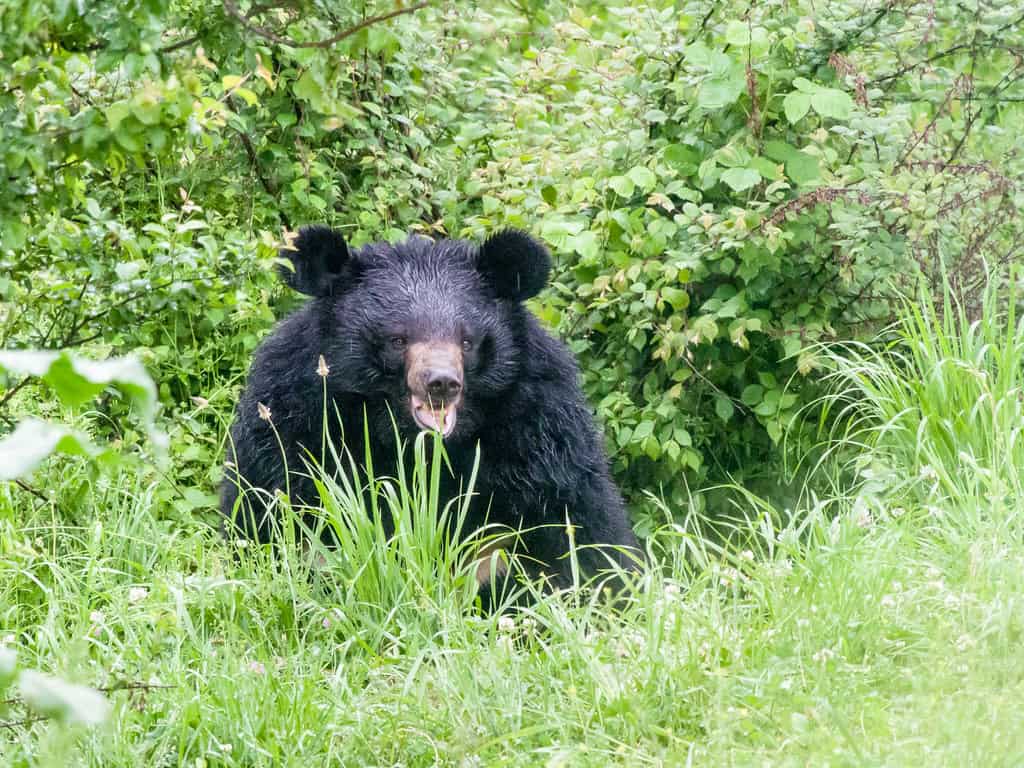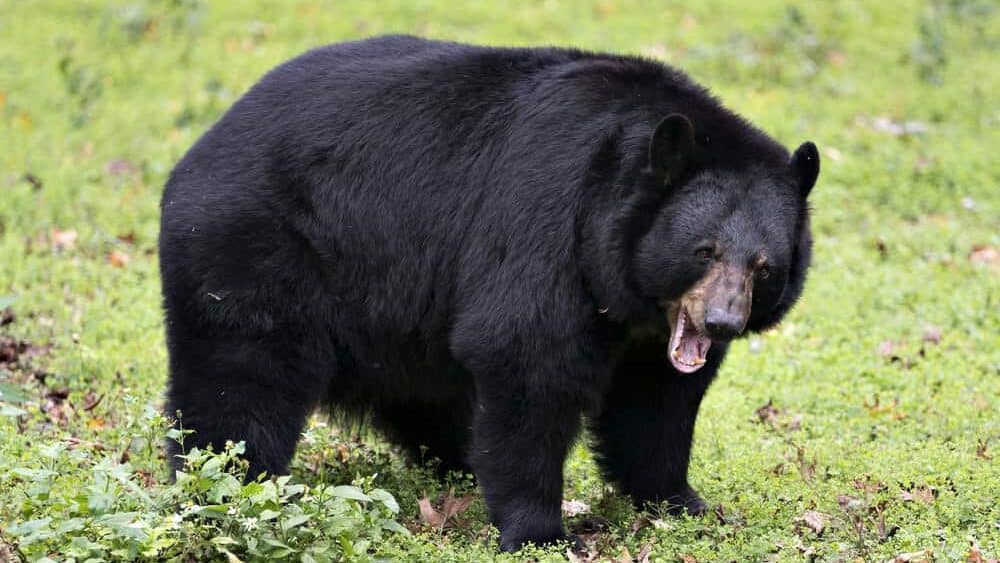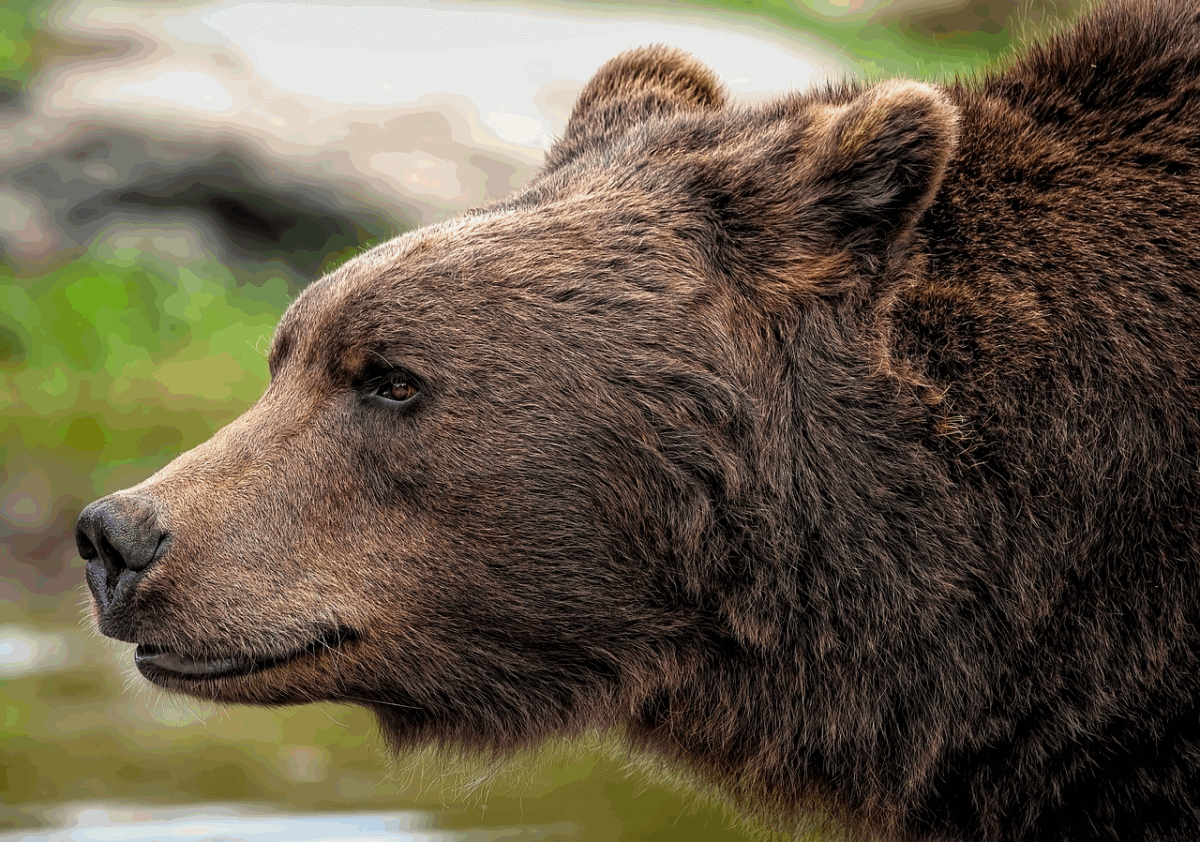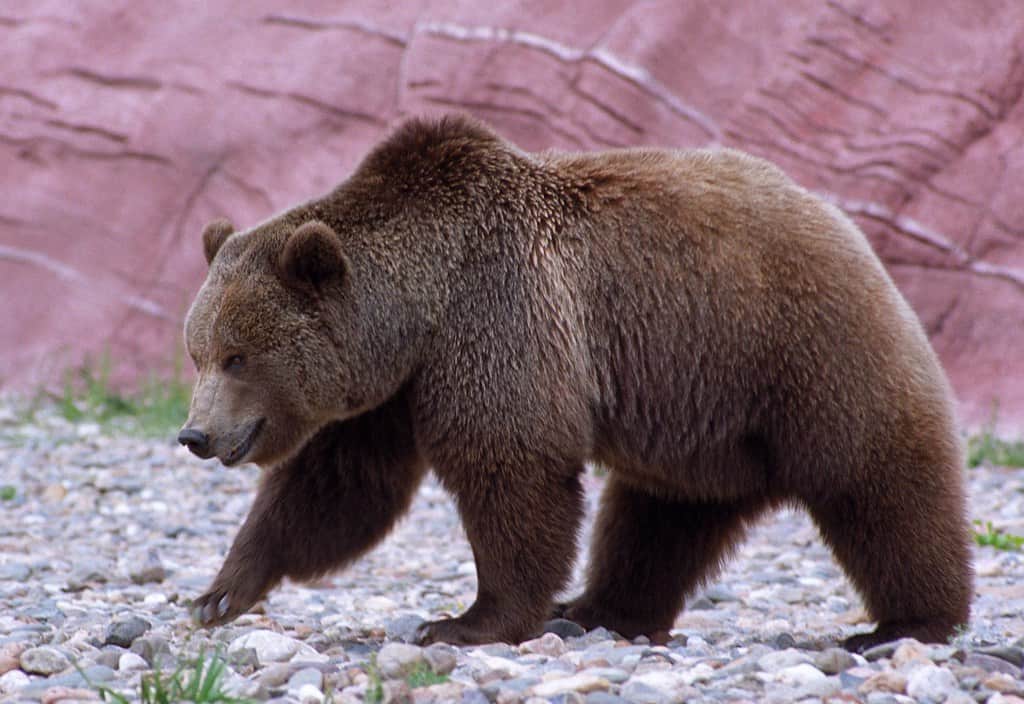Bears are remarkable animals that undertake seasonal migrations to fulfill their biological needs for food, mates, and suitable habitat. Different species exhibit varied migration patterns, with some traveling hundreds of miles annually. North American black bears typically range across 15-77 square miles, while grizzlies may cover territories spanning 300-500 square miles. These magnificent creatures don’t simply wander aimlessly—they follow ancestral routes that have been used for generations, guided by an innate navigational ability and memory of resource-rich locations.
Climate change and seasonal shifts directly influence these migration patterns. As berry patches ripen at higher elevations in summer and fall, bears move upslope. During spring, they descend to valleys where vegetation emerges earlier. This vertical migration is particularly evident in mountainous regions like the Rockies, Cascades, and Appalachians. Brown bears in Alaska’s coastal regions time their movements to coincide with salmon runs, while polar bears in the Arctic track the seasonal formation and melting of sea ice to access seal hunting grounds. These predictable movements make bears particularly vulnerable to habitat fragmentation.
The Challenge of Habitat Fragmentation

Habitat fragmentation represents one of the most significant threats to bear populations worldwide. As human development expands—through highways, residential areas, industrial zones, and agricultural expansion—bear habitats become increasingly divided into isolated patches. This fragmentation creates dangerous barriers that interrupt natural migration routes bears have used for centuries. The consequences are severe: limited access to essential resources, reduced genetic diversity as populations become isolated, and increased human-bear conflicts as the animals attempt to navigate through developed areas.
The statistics paint a concerning picture. In North America alone, an estimated 1 million acres of wildlife habitat are lost annually to development. Roads are particularly problematic—the United States has approximately 4 million miles of public roads, many cutting through critical bear habitat. Studies show that bears actively avoid crossing busy highways when possible, with research documenting that roads with traffic volumes exceeding 10,000 vehicles per day can become nearly impermeable barriers for bears. When bears do attempt crossings, the results are often fatal—approximately 350-400 black bears and 30-50 grizzly bears are killed in vehicle collisions annually across North America.
What Are Wildlife Corridors?

Wildlife corridors are protected strips of land that connect fragmented habitats, allowing animals to safely move between areas that would otherwise be separated by human development. These corridors can take many forms, ranging from vast protected wilderness areas spanning multiple states to narrow greenbelts threading through urban environments. The defining characteristic is their functionality—they provide safe passage for wildlife movement, connecting core habitat areas and facilitating essential migration. For bears specifically, effective corridors typically need to be at least 100 meters wide and feature adequate cover and natural food sources.
Wildlife corridors fall into several categories, each serving different needs. Regional corridors connect large protected areas across significant distances, like those linking various national parks in the Yellowstone to Yukon Conservation Initiative. Linear corridors follow natural landscape features such as river valleys or mountain ridges. Stepping stone corridors consist of a series of smaller habitat patches that animals can use as temporary refuge points during longer journeys. Restoration corridors are human-created passages specifically designed to reconnect habitats that have been previously fragmented, often incorporating landscape features attractive to target species like bears.
Bear-Specific Corridor Design Elements

Designing wildlife corridors specifically for bears requires careful consideration of their biological needs and behaviors. Effective bear corridors incorporate dense vegetation cover, which provides security and makes bears feel protected during movement. Research shows that black bears in particular prefer passages with at least 70% vegetation cover. The corridors must also include natural food sources—berry-producing shrubs, nut trees, and diverse plant communities—that sustain bears during migration. Width is crucial, with most experts recommending a minimum of 100-300 meters for smaller black bears and 500+ meters for grizzly bears to accommodate their greater sensitivity to human disturbance.
Strategic placement is perhaps the most critical element in corridor design. Successful bear corridors follow traditional migration routes identified through GPS collar data, track surveys, and camera trap monitoring. They avoid areas of high human activity and noise when possible. Water sources must be accessible along the route, as bears require regular hydration. Topography also influences design, with bears often preferring to travel along ridgelines or through valley bottoms rather than across steep slopes. Additionally, effective corridors include safe passage across roads through wildlife overpasses, underpasses, or culverts specifically engineered to accommodate the size and behavior of bears.
The Yellowstone to Yukon Initiative

The Yellowstone to Yukon Conservation Initiative (Y2Y) stands as one of the most ambitious wildlife corridor projects in North America, spanning 2,000 miles across the Rocky Mountains from Yellowstone National Park to Canada’s Yukon Territory. Launched in 1993, this visionary project aims to create a continuous network of protected lands allowing bears and other wildlife to move safely throughout this vast mountainous region. Y2Y encompasses approximately 502,000 square miles of land, working across two countries, five U.S. states, two Canadian provinces, and the territories of over 75 Indigenous groups. The initiative has helped protect or enhance over 80 million acres of land to date.
For bear populations, Y2Y has been transformative. Grizzly bears, which once occupied just 2% of their historical range in the contiguous United States, now have expanded movement possibilities. The initiative has identified and protected 117 key corridors specifically supporting bear migration. Success stories include the Cabinet-Purcell Mountain Corridor, where grizzly bear numbers have increased by approximately 20% since connectivity measures were implemented. GPS collar data shows bears now regularly traveling between previously isolated habitats, increasing genetic exchange between populations. Conservation easements along critical pinch points have prevented development that would have severed these crucial linkages, ensuring bears can continue their natural movements across this impressive landscape.
Wildlife Overpasses and Underpasses

Wildlife crossing structures represent some of the most visible and effective components of wildlife corridors, directly addressing the deadly barrier effect of roads. Overpasses are essentially vegetated bridges that allow bears and other wildlife to cross above highways without encountering vehicles. These structures are typically 50-70 meters wide, landscaped with native vegetation to create a natural-feeling passage. The most famous example is likely Banff National Park’s series of six overpasses spanning the Trans-Canada Highway, which have reduced wildlife-vehicle collisions by over 80% in their vicinity. These structures cost between $5-10 million each but provide tremendous return on investment through accident prevention and wildlife conservation.
Underpasses offer an alternative approach, providing passage beneath roadways. These range from large open-span bridges that allow rivers and wildlife to pass underneath highways to smaller culverts modified for wildlife use. For bears specifically, underpasses need sufficient height (minimum 4-5 meters) and openness to feel secure. The Interstate 90 Wildlife Bridges Project in Washington state includes several underpasses that have documented regular bear usage through camera traps. In Florida, bear underpasses along State Route 46 have reduced bear mortality by 95% in previously high-collision areas. Both overpasses and underpasses work most effectively when paired with wildlife fencing that funnels animals toward these safe crossing points and prevents them from entering roadways.
Measuring Corridor Effectiveness

Evaluating the effectiveness of wildlife corridors requires comprehensive monitoring programs utilizing multiple technologies and approaches. Remote camera traps positioned at strategic points along corridors provide photographic evidence of bear movements without human interference. GPS tracking collars offer more detailed insights, recording precise movement patterns of individual bears and demonstrating whether they successfully navigate through corridors between habitat patches. DNA sampling through hair snags allows researchers to identify individual bears and track genetic diversity across populations, a key indicator of successful connectivity. These monitoring efforts often reveal patterns not immediately obvious, such as bears’ preference for crossing at specific times (typically dawn and dusk) or seasonal variations in corridor usage.
The data confirms wildlife corridors work. A 2020 meta-analysis published in Conservation Biology examined 78 studies across multiple species and found that movement rates through corridors were 76% higher than through non-corridor areas. For bears specifically, studies in the Bow Valley of Alberta documented a 70% increase in genetic diversity among previously isolated black bear populations following corridor implementation. In Washington’s North Cascades, corridor use by black bears increased by 43% within three years of establishment, with over 80% of collared bears successfully navigating through the protected pathways. Perhaps most convincingly, areas with well-designed corridors show significant reductions in bear mortality—wildlife crossings in Banff National Park have reduced bear-vehicle collisions by 87% in monitored sections.
Economic Benefits of Bear Corridors

While the conservation value of wildlife corridors is clear, their economic benefits often help secure broader public and political support. The most direct economic advantage comes from reduced wildlife-vehicle collisions. In the United States, deer, bear, and other large mammal collisions cause approximately 200 human fatalities and 26,000 injuries annually, with an estimated economic cost exceeding $8 billion. Wildlife crossing structures in Banff National Park alone save an estimated $445,000 annually in prevented accidents. A cost-benefit analysis conducted by the Western Transportation Institute found that wildlife crossing structures pay for themselves within 10-20 years through accident reduction alone, not counting ecological benefits.
Beyond accident prevention, wildlife corridors supporting bear populations create significant tourism opportunities. Wildlife viewing represents a substantial economic driver—bear watching in the Great Smoky Mountains National Park contributes an estimated $10 million annually to local economies. In British Columbia, bear viewing generates over $15 million in direct annual revenue. Property values also benefit; studies show homes near protected wildlife corridors command 20-30% higher prices than comparable properties without such amenities. Additionally, corridors often preserve ecosystem services like clean water, flood control, and carbon sequestration that would otherwise require costly infrastructure solutions. The Yellowstone to Yukon region’s ecosystem services are valued at over $4 billion annually, with corridors playing a crucial role in maintaining these benefits.
Community Engagement and Education

Successful wildlife corridor initiatives depend on community support and participation. Educational programs help residents understand bear behavior and the importance of allowing safe migration. In corridor regions, schools often incorporate wildlife education into their curriculum, and community workshops teach practical skills like proper trash management to reduce attractants. Citizen science initiatives engage locals in monitoring corridor effectiveness through volunteer camera trap monitoring or reporting bear sightings to tracking databases. These programs build personal connections to conservation efforts while generating valuable data for researchers.
Building public support requires addressing concerns about increased bear presence near human settlements. Communities within corridor zones typically develop Bear Smart programs that emphasize coexistence strategies. In corridor communities like Canmore, Alberta, and Issaquah, Washington, bear-resistant garbage containers are mandatory, attractant management is enforced, and rapid response teams address problem situations before they escalate. Public input is actively sought during corridor planning phases, ensuring local knowledge informs design and implementation. Success stories abound—in Montana’s Cabinet-Yaak region, initially skeptical communities now proudly identify as corridor communities, with local businesses even incorporating bear imagery into their branding after seeing the economic and ecological benefits of supporting bear movement.
Challenges and Obstacles

Despite their proven effectiveness, wildlife corridors face numerous implementation challenges. Land acquisition represents perhaps the greatest hurdle—assembling contiguous protected lands across mixed ownership patterns requires complex negotiations with multiple private landowners, corporations, and government agencies. Funding limitations also constrain corridor development; a comprehensive national wildlife corridor system would require billions in investment. Political obstacles arise as well, particularly when corridor initiatives span multiple jurisdictions with differing regulatory frameworks and priorities. Even when corridors are established, ongoing threats from development pressure, resource extraction interests, and potential regulatory changes require constant vigilance.
Climate change introduces additional complexities, potentially altering the habitats corridors are designed to connect. As vegetation zones shift with changing temperature and precipitation patterns, corridors may need to be repositioned or expanded. Increasing human recreation in natural areas can disrupt corridor functionality if not properly managed—studies show bears may avoid otherwise suitable corridors if human activity exceeds certain thresholds. Invasive species can degrade corridor habitat quality, while increasing fire frequency in many regions threatens to temporarily disrupt connectivity. Finally, public acceptance remains challenging in some communities where cultural fears of bears persist or where concerns about restrictions on land use generate opposition. Addressing these multifaceted challenges requires adaptive management approaches and ongoing commitment from diverse stakeholders.
Future Directions in Corridor Conservation

The field of wildlife corridor design continues to evolve, incorporating new technologies and scientific understanding. Advanced computer modeling now allows conservationists to simulate bear movements across landscapes under various scenarios, identifying optimal corridor locations before investment begins. Remote sensing technologies provide increasingly detailed habitat information without costly field surveys. Genetic analysis has become more accessible, allowing researchers to track population connectivity through DNA samples. These technologies enable more precise corridor planning that maximizes effectiveness while minimizing costs. Future corridors will likely incorporate climate change projections, positioning protected pathways to accommodate shifting habitats and changing migration patterns.
Policy innovations are emerging to support corridor implementation. The 2019 Wildlife Corridors Conservation Act in the United States aims to establish a national wildlife corridors system and provides funding mechanisms for implementation. Similar legislation is being considered in Canada. Conservation easements offering tax incentives to private landowners who maintain corridor-friendly land uses are expanding. Public-private partnerships increasingly share corridor costs and responsibilities, while Indigenous-led conservation initiatives are gaining recognition for their effectiveness in maintaining landscape connectivity. Corporate involvement is growing as well, with some companies now incorporating corridor protection into their sustainability commitments. These evolving approaches, combined with growing public awareness of connectivity needs, provide hope for a future landscape where bears and other wildlife can move safely to meet their biological needs.
Conclusion: The Future of Safe Bear Migration

Wildlife corridors represent a critical conservation strategy that acknowledges a fundamental ecological truth—animals like bears need room to roam. By reconnecting fragmented landscapes, these protected pathways allow bears to fulfill their biological needs for food, mates, and suitable habitat while reducing dangerous human-wildlife conflicts. The evidence is clear that well-designed corridors work, increasing bear movement between habitat patches, enhancing genetic diversity, reducing roadkill mortality, and supporting healthier, more resilient populations. Beyond their conservation value, corridors deliver tangible economic benefits through reduced vehicle collisions, enhanced tourism opportunities, and preserved ecosystem services.
As we look to the future, the expansion of wildlife corridor networks offers hope for bear conservation in an increasingly developed world. Emerging technologies, innovative policies, and growing public support are accelerating corridor implementation across North America and beyond. While challenges remain, the collaborative efforts of scientists, communities, governments, and private landowners demonstrate what’s possible when conservation vision is matched with practical action. For bears navigating our human-modified landscape, these efforts make all the difference—providing safe passage on ancient migration routes and helping ensure these magnificent animals remain part of our natural heritage for generations to come.
- How Wildlife Corridors Help Bears Migrate Safely - August 26, 2025
- How a Giant Sloth Once Roamed the US and Stood Over 10 Feet Tall - August 26, 2025
- A New Species of Cat Has Been Found in the Andes - August 26, 2025

